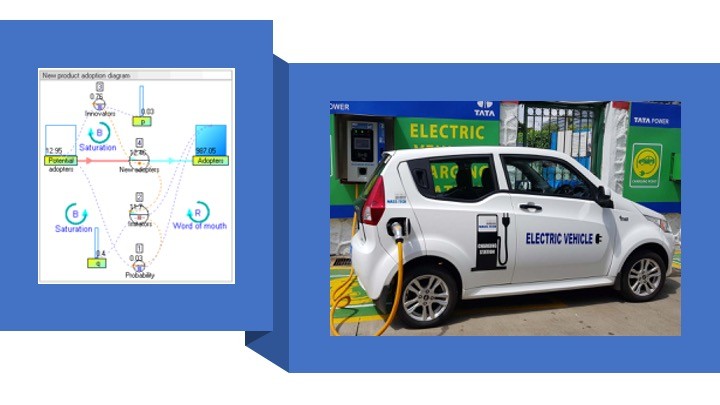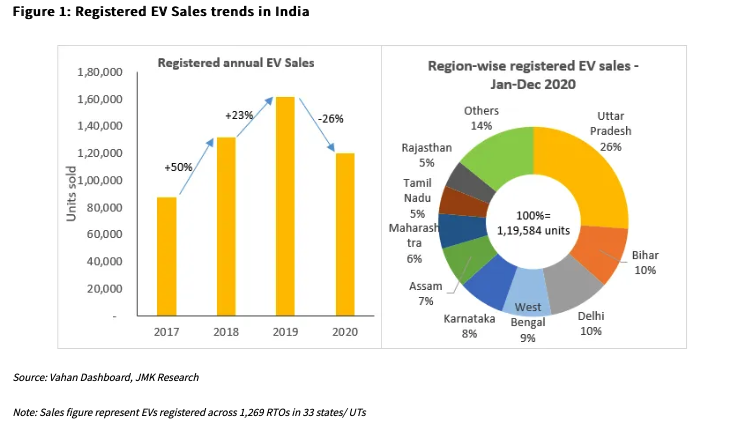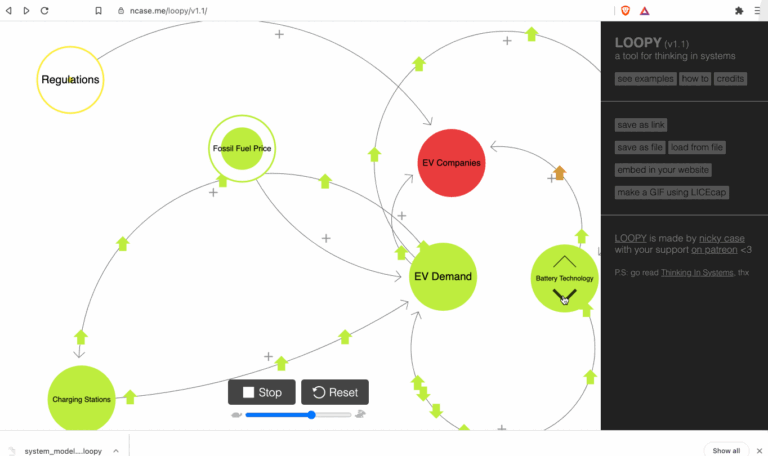Electric Vehicles - Upcoming Trends & System Dynamics

Electric vehicles in India have finally crossed that threshold of being just talked about and being owned by a hand-full of people, and are now becoming an emerging trend. This is quite evident with the rising number of EV companies offering a range of EVs both cars and bikes. This trend continues to be backed by a rising number of start-ups jumping in the EV space.

2020 however saw a dip in sales of EVs, which I believe happened with all the automotive sector due to pandemic. What is interesting to note is the total number of EV sales over years, which is still a long way to compete with fossil fuel based vehicles. I believe range of an EV is the single most important factor for customers not adopting EV as their primary vehicle of choice. If we can see a good range of EV, with a network of charging stations easily accessible, something similar to CNG stations, with quick charging, EV market can see a boom in demand, and our dependency on petrol and diesel cars can come down. In-fact Bill Gates talks about range and adoption of electric cars and technology trends here in a YouTube video.

If we have a look at the Gartner hype cycle for Automotive technologies, the EV charging infrastructure is already going through a ‘trough of disillusionment’. This means, the hype about this is already over, but still needs investments to push this technology towards productivity, and maturity. This however is a global trend, and I truly believe we will see this happening in India as well.
With some systems thinking and with the help System Dynamics causal loop modeling, one can simulate what could be the makers or breakers for EV adoption in India. This will however require good judgement of policies and other factors. Factors, such as fuel prices, battery technologies, ecosystem, subsidies, etc.
Below is a very simple example of System Dynamics model for EV adoption I built using a free online tool called Loopy. The circles or nodes in the diagram represent all the factors we want to understand, or have an impact over others. Such as if want to understand how EV demand will grow over years, we capture other nodes which impact this adoption, and connect them together with causal loops. These causal loops have either positive or negative relationships, e.g. improvement in ‘Battery Technology’ will have a positive impact on ‘EV Demand’. The distance between nodes, or the length of loops, represent the rate at which the effect propagates in this tool. Few other factors that stood out while building this model were policies, and fuel prices. If the government pushes the write policies such as subsidies for purchase or such policies which could help accelerate battery technologies, we could see EV becoming mainstream, vehicle of choice for the masses, sooner than later!

If you are interested in understanding how to adopt systems engineering and model based systems engineering practices within your organization, reach out to BlueKei Solutions team at info@Blue-Kei.com. We specialize in systems engineering consulting, project executions, process adoptions such as compliance to ISO15288, ARP 4754A, ISO 42020, digital transformations. We can also conduct capability development workshops which are experiential and tailored to your needs. With systems engineering adoption you can address the complexity, manage evolving risks and bring transformation in communication within your organization through digitalization and create the digital thread.

